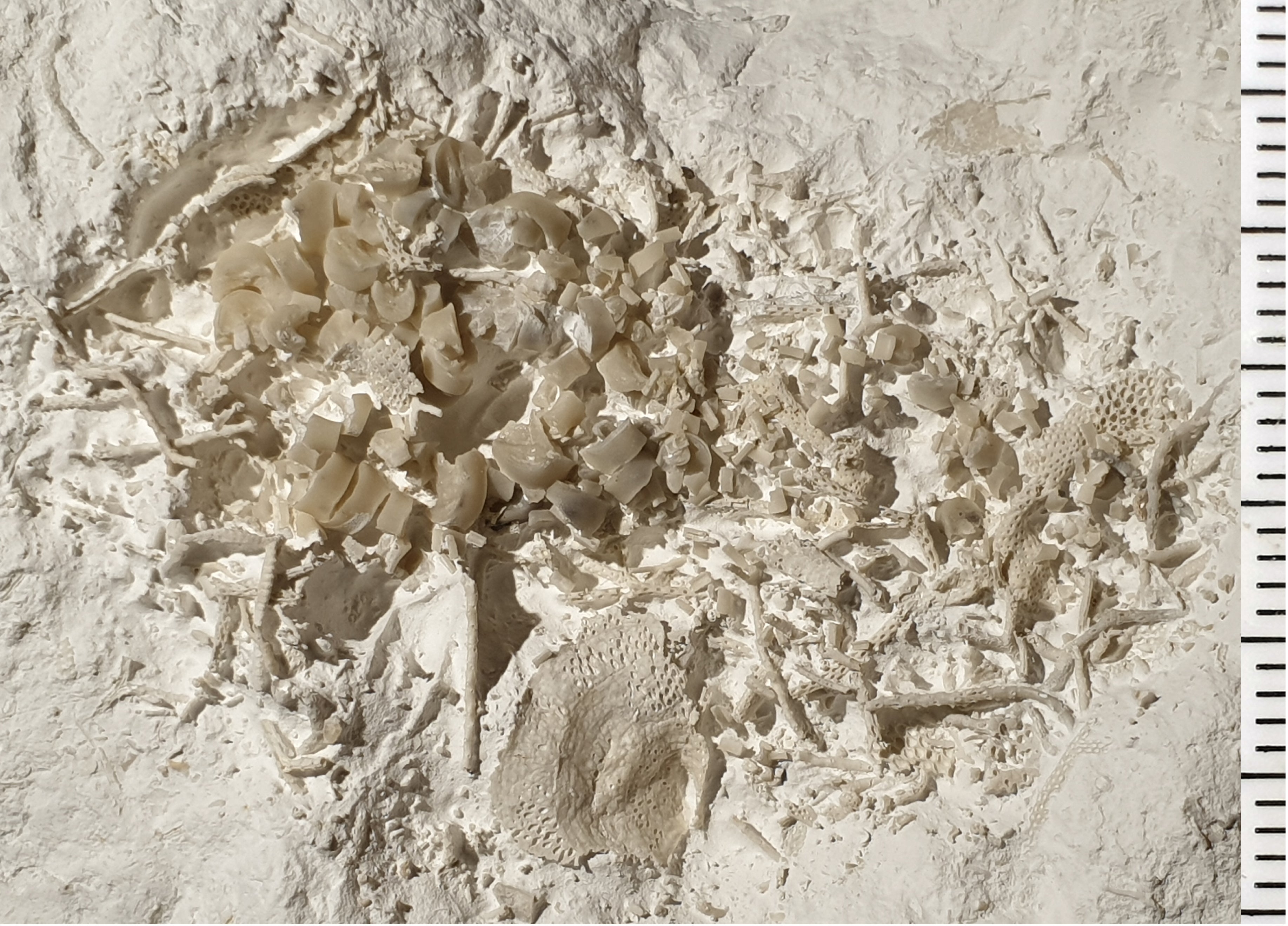66 million-year-old fish vomit from time of the dinosaurs found in Denmark
Amateur fossil hunter Peter Bennicke made a “truly unusual find”, as the fossilised vomit now resides in the Museum of East Zealand

Scientists have discovered what might be the “world’s most famous piece of puke ever” after a piece of fossilised vomit dating back to the age of the dinosaurs was discovered in Denmark.
The find was made by local fossil hunter Peter Bennicke at Stevns Klint, a UNESCO-listed coastal cliff in the east of the country, south of Copenhagen.
While out on a walk, Mr Bennicke, came across some unusual-looking fragments which turned out to be pieces of sea lily - an underwater species related to starfish and sea urchins - in a piece of chalk.
When he took the fragments to be examined at the Museum of East Zealand, they confirmed the vomit could be dated to the end of the Cretaceous period, 66 million years ago. The fragments of vomit would have been emitted when dinosaurs such as Tyrannosaurus Rex and Triceratops were still roaming.
Palaeontologist and curator at the Museum of East Zealand, Jesper Milàn, told the BBC the fossil was a “truly an unusual find” as it forms a piece in the puzzle of understanding relationships in the prehistoric food chain.
He told the broadcaster: “It tells us something about who was eating who 66 million years ago.”
The palaeontologist explained that sea lilies were not a particularly nutritious diet, as they mainly consisted of chalky skeletal plates, held together by a few soft parts. During the period, fish and sharks would eat them despite the fact they were hard to digest, meaning they would “regurgitate all the chalk bits.”
The discovery, also gives an insight into past ecosystems, as Mr Milàn continued: “This find is a unique glimpse into the everyday situation in the bottom of the Cretaceous sea - the sea during which the dinosaurs lived.”
The Museum of East Zealand only sent word of the discovery out to local press before it got picked up globally, making it “the world’s most famous piece of puke ever.”
Join our commenting forum
Join thought-provoking conversations, follow other Independent readers and see their replies
Comments
Bookmark popover
Removed from bookmarks